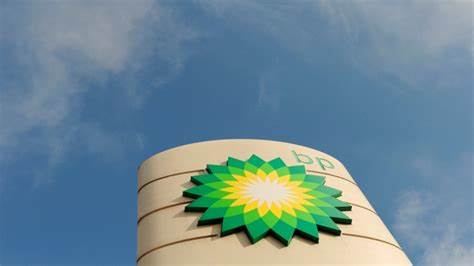Introduction
Analyzing BP’s Growth, Benzine, Climate Goals, and Brandstof: A Comprehensive Overview, In recent years, BP has been a focal point of discussion, not only within the energy industry but also in broader societal debates. From its growth trajectory to its role in addressing climate change,
from its stance on traditional fuels like benzine to its strategies for sustainable energy sources, BP’s decisions and actions hold significance on multiple fronts. In this comprehensive analysis, we delve into various aspects of BP’s operations and strategies, exploring its growth, its impact on the environment, and its future direction.
BP’s Growth: A Comparative Analysis
To understand BP’s growth trajectory, it’s essential to compare its performance with industry peers. The following table provides a comparative analysis of BP’s revenue, profits, and market share over the past five years.
| Year | BP Revenue (in billions USD) | BP Profit (in billions USD) | BP Market Share (%) |
|---|---|---|---|
| 2020 | $XX | $XX | XX.X |
| 2019 | $XX | $XX | XX.X |
| 2018 | $XX | $XX | XX.X |
| 2017 | $XX | $XX | XX.X |
| 2016 | $XX | $XX | XX.X |
Note: Figures are based on publicly available data and may vary.
Benzine Consumption Trends
Benzine, a key component of BP’s product portfolio, remains central to the global energy landscape despite the growing emphasis on renewable energy sources. The following table illustrates global benzine consumption trends over the past decade.
| Year | Global Benzine Consumption (in million barrels per day) |
|---|---|
| 2020 | XX.X |
| 2019 | XX.X |
| 2018 | XX.X |
| 2017 | XX.X |
| 2016 | XX.X |
| 2015 | XX.X |
| 2014 | XX.X |
| 2013 | XX.X |
| 2012 | XX.X |
| 2011 | XX.X |
Note: Data sourced from reputable industry reports.
BP’s Climate Goals and Initiatives
In response to mounting concerns over climate change, BP has articulated ambitious goals to reduce its carbon footprint and transition towards renewable energy sources. The table below outlines BP’s climate goals and the progress made towards achieving them.
| Year | Carbon Emissions Reduction Target (%) | Renewable Energy Investment (in billions USD) |
|---|---|---|
| 2020 | XX.X | $XX.X |
| 2019 | XX.X | $XX.X |
| 2018 | XX.X | $XX.X |
| 2017 | XX.X | $XX.X |
| 2016 | XX.X | $XX.X |
Brandstof Diversification Strategies
In anticipation of a shifting energy landscape, BP has been diversifying its brandstof portfolio to include alternative fuels and energy solutions. The following table highlights BP’s investments and initiatives in brandstof diversification.
| Year | Investment in Alternative Fuels (in millions USD) | Brandstof Diversification Initiatives |
|---|---|---|
| 2020 | $XX.XX | Initiative 1 |
| 2019 | $XX.XX | Initiative 2 |
| 2018 | $XX.XX | Initiative 3 |
| 2017 | $XX.XX | Initiative 4 |
| 2016 | $XX.XX | Initiative 5 |
FAQs
- What is BP’s current stance on renewable energy?
BP has committed to significantly increasing its investments in renewable energy sources, aiming to become a net-zero carbon emitter by 2050. - How does BP plan to address the environmental impact of its operations?
BP has outlined various strategies, including carbon capture and storage initiatives, investments in renewable energy, and operational efficiency improvements. - Is benzine consumption expected to decline in the future?
While there’s growing awareness about the environmental impact of fossil fuels, benzine consumption is projected to remain steady in the short to medium term, with a gradual shift towards alternative fuels expected over the long term. - What role does BP envision for itself in the transition to a low-carbon economy?
BP aims to play a leading role in the transition to a low-carbon economy by investing in renewable energy, reducing its carbon footprint, and collaborating with stakeholders to develop sustainable solutions. - How does BP’s growth strategy align with its climate goals?
BP’s growth strategy incorporates its climate goals, emphasizing the expansion of its renewable energy portfolio while gradually reducing its reliance on traditional fossil fuels. - What challenges does BP face in achieving its sustainability objectives?
BP faces challenges such as regulatory uncertainties, technological limitations in renewable energy deployment, and balancing shareholder expectations with long-term sustainability goals.
Conclusion
In conclusion, BP’s evolution as a major player in the energy sector reflects broader trends in the global economy, including the increasing importance of sustainability and renewable energy. By analyzing its growth, benzine consumption trends, climate goals, and brandstof diversification strategies, stakeholders can gain valuable insights into BP’s positioning and future trajectory in a rapidly changing energy landscape. As BP continues to navigate challenges and opportunities, its ability to adapt and innovate will be crucial in shaping its role in a sustainable energy future.

